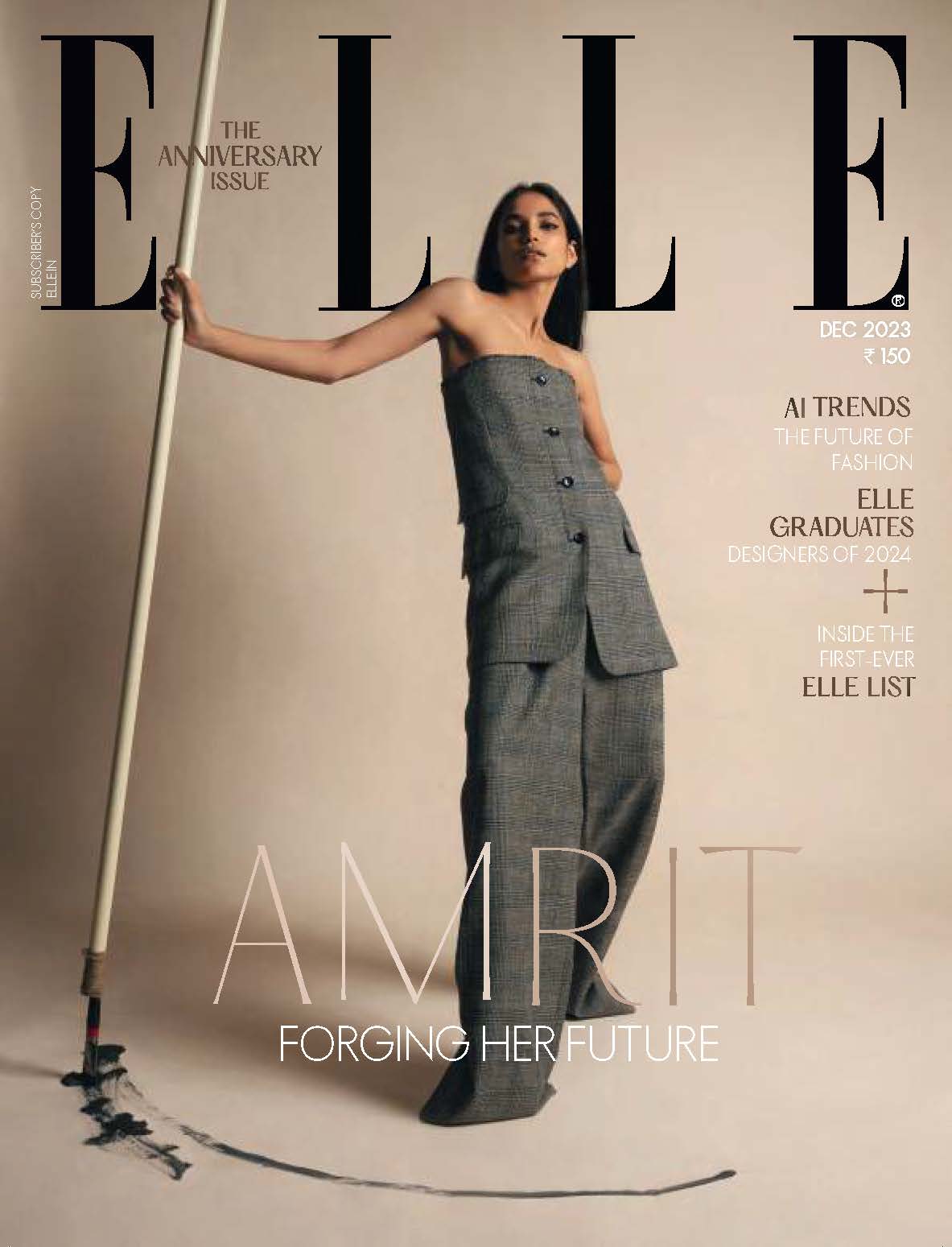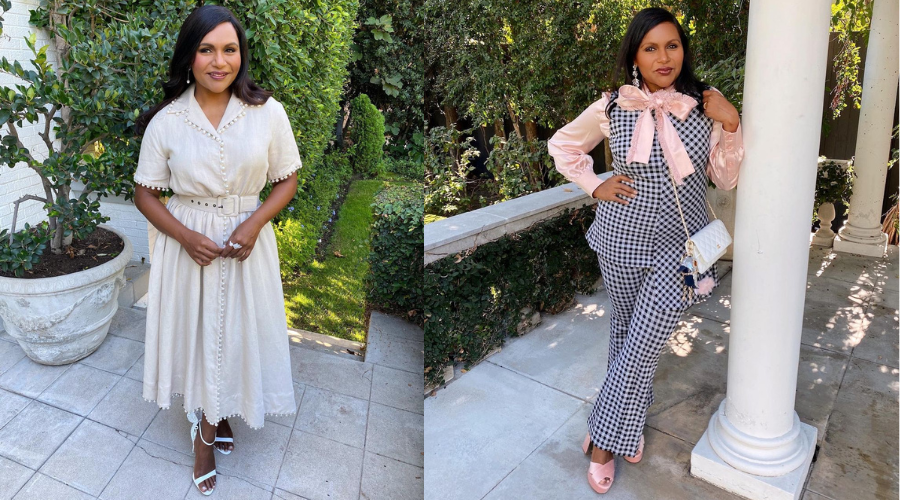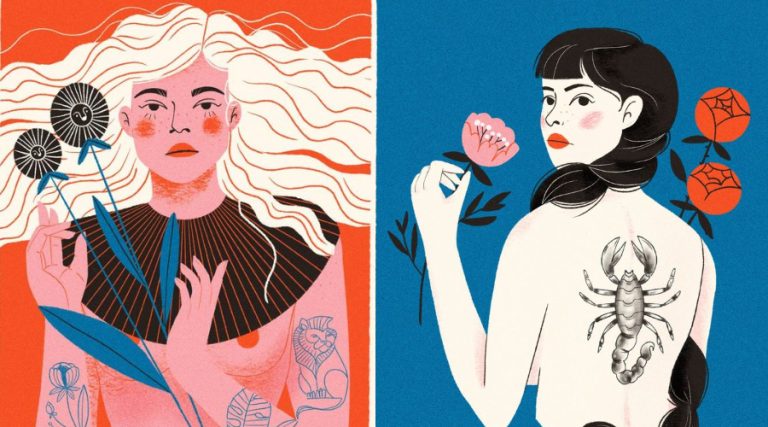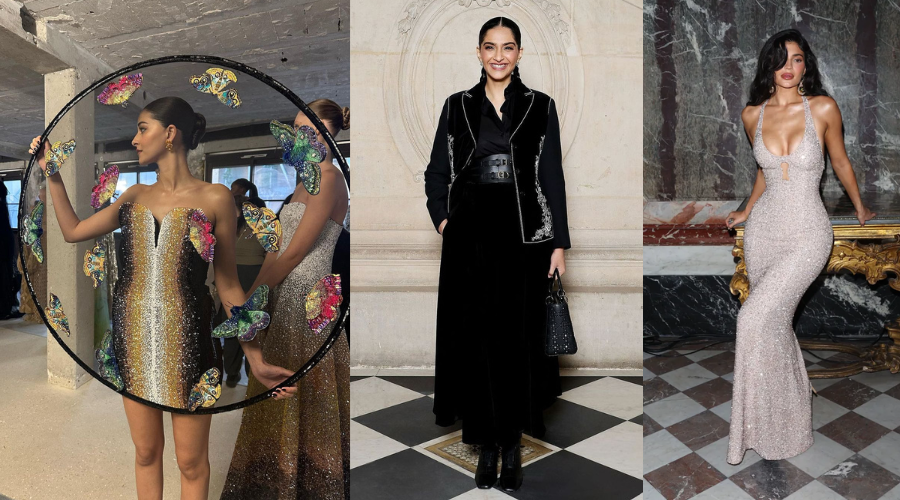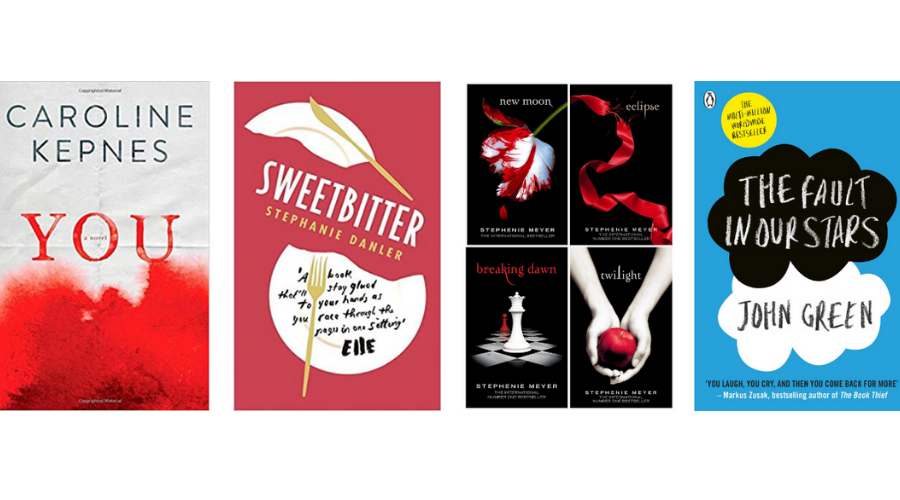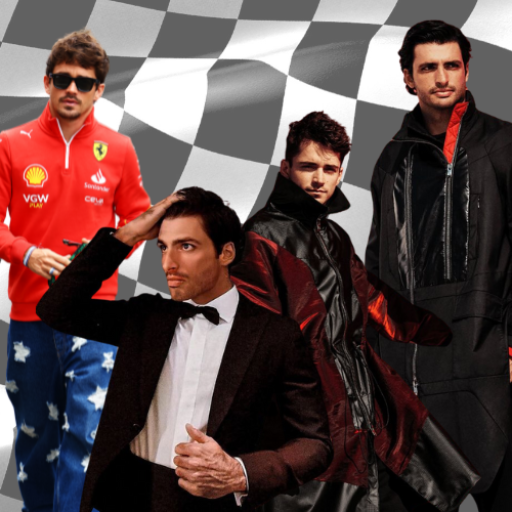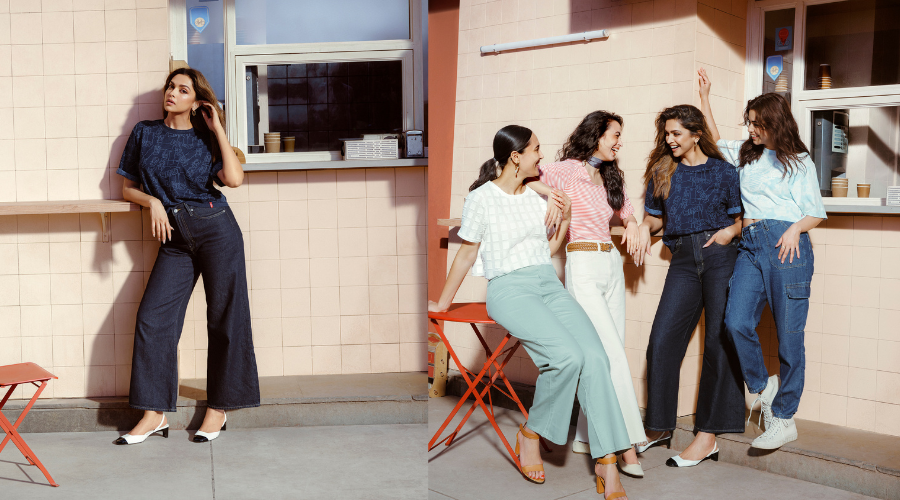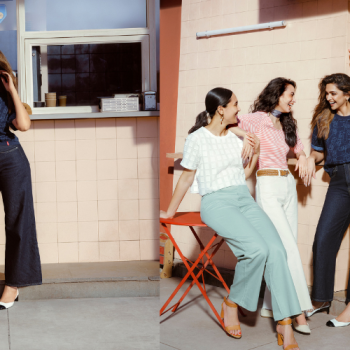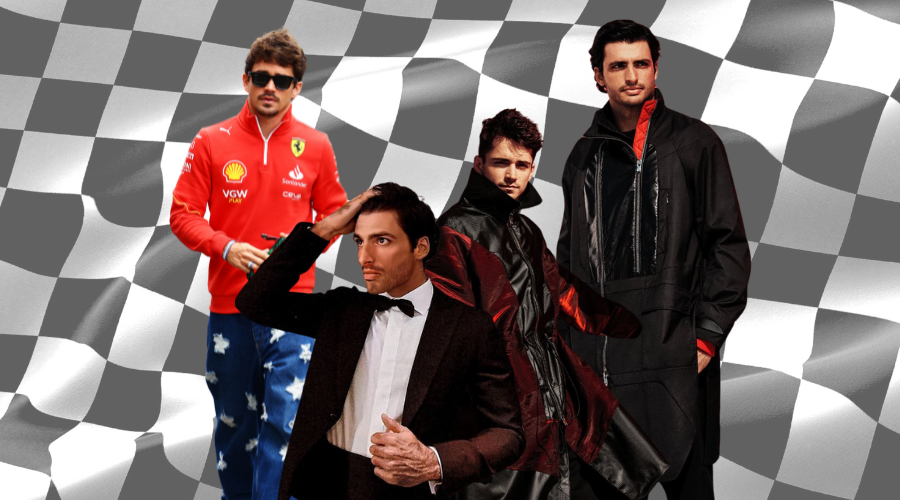Feeling seen in the mainstream media is perhaps one of the biggest things that we are all chasing. From bodies that come close to representing us to stories that speak of our lives and validate our struggles, we look to find the ‘me’ in everything around us. At Elle India, we’re celebrating 26 years of being at the forefront of representation, putting together stories, covers, fashion spreads, and beauty shoots that connect with people. This year we’ve dug deeper into the power of representation. We sat down with five incredible people with stories that often get buried in the mainstream hustle and created the space for them to narrate the story of their lives…
1. Nu
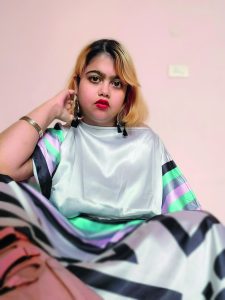
Beyond the corridors of privilege, Nu has built a community acutely self-aware of what it’s up against and never ceding ground to an ableist world.
The greatest stories that have historically resonated with us have perhaps a common denominator: They allow all of us to feel equally and deeply. As one weaves through the stories shared by Nu’s Revival Disability, every story is a ‘great’ one—of lost loves, hating our bodies and loving them. And finding time to nourish our weary eyes with art, reaching out to a loved one without any inhibitions, and the innumerable ways in which disabled folks perceive a world designed to exclude them.
“It was only after forming Revival Disability that I realised my identity and how I place myself in the world,” Nu takes us to the beginning. “Initially, Revival was about empowering myself and then I started asking questions.” What is activism in 2022? Who is included? Are there voices that will always remain relegated to the margins? Gradually, they would realise that these questions have no easy answers. If they were to make sense of a chaotic, able-bodied world, the only way to go about it was to douse themselves in it. “Now, we have around 500 individuals of varying abilities and disabilities in our group, but it has also grown into a space for us to rant about ableism, organisations that are ableist to us, and are microaggressive towards queer and disabled folks.”
Recently, Nu was the recipient of the prestigious Ladli Award for Gender Sensitisation for their work in making us aware of the intersection between disability and queerness. This ELLE India profile, then, is also a step forward for them in “taking power back” from a patriarchal, ableist and cis society so that they can articulate what it means to be isolated in an able-bodied world. “The process of accepting our identity is not always about happiness because our bodies also hold grief, rage and vulnerability.”
Nu clarifies that the visuals of them speaking freely and confidently about their queer and disabled self on national and international forums was not an overnight process. They didn’t spring up one day with all the enthusiasm and self-acceptance to put themselves out there. The way they see it, activism is not really an ideal dream for anyone. It’s certainly not a world that is always rewarding. But for those who are systematically excluded from the mainstream, much like Nu, activism becomes a forced choice. They admit that there are days when they feel like doing something else altogether, a plush corporate job, maybe with endless perks and enviable city views. And then comes the realisation: No one will fight for them if they don’t.
“I find hope in rage because a lot of what I’ve done is because of the continuous anger that tells me to disrupt and rebel against the cis-bodied world. In my own way, and in ways that I can manage, such as even writing a story, because we are more than a data point or an annual report,” they emphasise.
– Arman Khan
2. Grace Banu
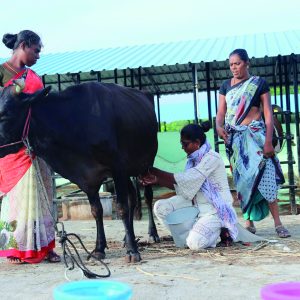
In a highly hierarchical Indian queer community, Grace Banu is battling in a landscape where caste and gendered roles still dictate who gets access to civic amenities and life itself.
Beyond the woke urban spaces of India, trans lives have seen it all—a lack of resources and an apathetic state that will find almost everything at its disposal to delegitimise them. Even within the queer community, trans people are further discriminated against, with barely any support system when faced with violence. In this sea of gloom, Dalit and trans activist Grace Banu has been steadily and consistently arguing for a dignified life for trans women in her home state of Tamil Nadu and beyond.
“A trans person will always be at the mercy of the state,” Banu says. “Even to get recognised as trans, they need to go to the district headquarters. Most of the trans people in rural areas face multilayered discrimination in both caste and gender.”
Recently awarded the inaugural ‘Best Third Gender’ award for contributions to society by the Tamil Nadu government, Banu is also the state’s first trans engineer. As with the best of empowered individuals who rise the ranks against all odds, she had ambitious plans for the trans community. On the outskirts of Kovilpatti in Tamil Nadu, she was instrumental in creating Sandeep Nagar, a near-perfect utopia for rural trans women. It is a town encased by dense shrubbery and swathes of solar panels—the first cooperative society in India that provides both housing and employment.
But the utopia was anything but easy. “For more than seven years, we tried getting Sandeep Nagar recognised. They wouldn’t even give us a minute,” she says. But it did bring about a gradual change. Recently, Banu was also contacted by the Collectorate offices of Tiruvallur and Chengalpattu, who wanted her expertise to set up similar cooperative societies.
And yet, rural India presents a picture of contradictions. For instance, in Madurai, rural trans folk performers, who earned a dignified living by taalattu (lullabies) and naatupura paatu (folk songs) for various cultural occasions, were hit the hardest with negligible state support. Can rural trans women sustain themselves through such unstable streams of income, we ask. “Even if we educate and sensitise the officials about the plight of rural trans women, they keep getting transferred every year or two, and we’re back to square one,” Banu explains. “This is the reason why rural trans women always try to rely on multiple sources of income.”
The way she sees it, the twin effects of transphobia and casteism certainly exacerbate the plight of rural trans women. “For rural trans woman, getting a document to access state benefits is also impossible.” It was around this time Banu led the fight and won a case in the Madras high court, which then allowed trans women to access state benefits without documents. “An urban queer person cannot even imagine how the struggles for rural trans women exist on such a molecular level.”
– Arman Khan
3. Arti Agrawal

For this Indian-born queer scientist, diversifying the world of stem to include queer voices is not a footnote but critically instrumental to saving the human race itself.
An outsider looking into Arti Agrawal Australian’s laboratory will be greeted with vivid visuals—the scientist can be seen hard at work with the laws of numerical modelling. The aim is to predict how light will behave in nano-lasers and optical fibres, extrapolating equations to fit lasers into little chips that can be encased in our phones, letting light refract and diffract to form magical worlds.
The genesis of it all was little Arti sitting in her parent’s living room in New Delhi before a wooden television, her eyes wide in awe and mouth agape at what Carl Sagan had to say about the wonders of science, of the living world, bubbling just seconds away from us. “Before I could even explain what being a scientist actually means, after watching the show, I’d go out and look at the stars, wanting to go into the stars,” she says. “We need relatable role models because even though my interest in science was because of Carl Sagan’s show, I don’t remember even a single Indian scientist, let alone a woman scientist, who I could look up to growing up.”
“Growing up in India, not only was homosexuality illegal but there was also no social acceptance or conversations around it. Every thought about queer people was a negative thought,” she recalls. “I internalised this homophobia and thought there is something wrong with me,” she says. “When I moved to the UK and started living in a society where gay people were out and proud, professional, successful and normal like everyone else, did I get over my homophobia.”
Agrawal believes that all those years of her early twenties could perhaps have been better used had the society around her reflected her identity better. “While a young person in their twenties would be working hard with their science and enjoying their family life, people like me were always worried about what would happen if someone found out I’m gay because you do not do your best if there is a constant, unrelenting stress, it lowers your productivity.”
Does she feel like it was all worth it when a queer scientist, under her peerage, makes a mark in the whole wide world? Only recently, Agrawal received an email from a Bangladeshi queer woman scientist, who was moved simply because before Agrawal, she had not seen any queer scientist of colour. This is not to say that it’s a quest full of love, she acknowledges that there are days when it does get too much; the constant scrutiny doesn’t help either. “It’s important to regulate your emotions and time, and one needs to understand that one is not a saviour or a messiah,” she says, stressing that she never wants anyone to believe she is perfect or put her on a pedestal.
– Arman Khan
4. Sangya Project
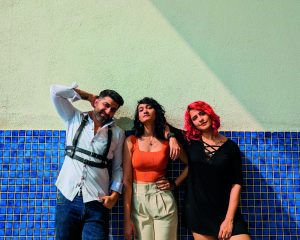
In a country where sex education and conversations around kinks and fetishes are looked down upon, Sangya Project is democratising the discourse around sex, one Instagram post at a time.
When you browse through the Instagram page of Sangya Project, you realise that sex and everything else it entails, cannot be viewed in isolation. It was always meant to be intersectional, giving shape to powerful narratives centred around class, caste and race. “Sangya is a pandemic baby,” says Aashish Mehrotra, who runs Sangya Project with his partners Tanisha RK and Shweta Sangtani—a polyamorous couple. “I came out as bisexual in my ‘30s, and it was a bittersweet moment for me because I wished I had the tools and information to understand my sexuality better.”
Even as there is no dearth of authoritative resources online, particularly on social media, when it comes to sex, there was a gaping void in the social media landscape when it came to accessing literature on sex in the desi context. The Sangya Project started easy—breaking down what it means to have an orgasm or the dynamics of pleasure. Then the posts graduated to busting common myths around sex. Their viral post on how flavoured condoms are only for oral sex because they lead to bacterial build-up if used for penetrative sex was picked up by news channels and local publications. Now, the posts have taken on a more multidimensional and intersectional hue. “Initially, it was just the three of us sharing our learnings, but we decided to have more voices onboard to make the space truly inclusive,” he says.
In November 2021, a queer Bahujan man detailed his experience of experiencing multidimensional assault for everyone via Sangya Project’s Instagram. His story takes us into the black heart of a cosmopolitan city where caste and sexuality are always up against a wall, the idea of a safe space is utopian, and the fight for autonomy is always a long and arduous one. “When we started writing essays, we realised it was very difficult to talk about sex without understanding mental health, our identities, or even our experiences with surviving trauma and kink. Because my entire relationship with kink in the world of BDSM is heavily influenced by trauma in the past,” Tanisha RK says, queer Bahujan herself. “You realise that being a Bahujan also plays a role in how you understand sex.” From Sangya Project’s interactions with others who were similarly aware of their traumas, they realised that a lot of people were exploring kink as a means of pleasure and autonomy and building a relationship with their minds, bodies and the larger social life.
Were there challenges along the way? Not really. The hiccup came when the Sangya Project became the first manufacturer of pleasure products in India. In the production factories, they were met with growing suspicion, even told that women wouldn’t be comfortable working in factories where these products are made. “Now that we’re in the thick of it, we now have more like-minded people who have collaborated with us. So, it’s gotten easier on that front, too,” she informs us.
– Arman Khan
5. Trishna Daswaney

Radicalising the beauty industry with a lesson on what inclusivity truly stands for, Trishna Daswaney, founder of Kohl Kreatives speaks to Elle about her journey.
Growing up in Hong Kong which was so close to the industrial hub of China, meant that pollution was rife. It significantly impacted the way Trishna Daswaney was raised, and as a result, she developed chronic asthma. When you are directly impacted in a significant way it makes you take sustainability more seriously. This in turn ended up being a core pillar of her brand, Kohl Kreatives.
Aside from her chronic asthma, Daswaney really struggled to fit in with all of her peers. She constantly had the unnerving thought that she looked awkward and felt different. That’s when make-up came into the picture for her.“My mum taught me how to use eyeliner, and expressing myself with that blue and purple eyeliner made me feel new and confident,” Daswaney shares.
When she first started the brand it was purely educational workshops and it’s been intriguing for her to work closely with various communities, which in turn has led to new product development. Daswaney works closely with those who are transitioning genders, going through cancer, or even disabled or blind.
“The beauty of this is it showed me how difficult some beauty tools are for different communities to use. Not only do the workshops let me connect with people on a human level, but they also allow me to innovate and solve some of their needs,” she adds.
A great example of how Kohl Kreatives works with people was in the development of their Feast Your Eyes collection, a 6-piece brush kit made to also include the low-vision community. It comes with an audio guide with descriptions of each brush. Daswaney herself went to the RNIB in London and sat down with a man who was a gardener and he was integral in describing the brush textures. “I met a woman who was encouraged not to use makeup because it may make her look “less disabled”. Our brushes were, in fact, the first time she was able to independently express herself using makeup,” Daswaney adds.
As amazing as it is to be acknowledged for vigorously shaking things up in the industry it doesn’t translate to success automatically knocking on your door. Daswaney reveals that it has actually been challenging for Kohl Kreatives to receive support from traditional retailers because it may come across as too extreme or too peculiar for their customers to understand.
Daswaney sees this negative response as a conversation starter, a great time to ask why and how it can be changed? The future looks exciting at Kohl Kreatives, with more innovations. They are going to grow because ultimately accessibility is NOT a trend.
– Sakshi Rawte
Find ELLE’s latest issue on stands or download your digital copy here.
